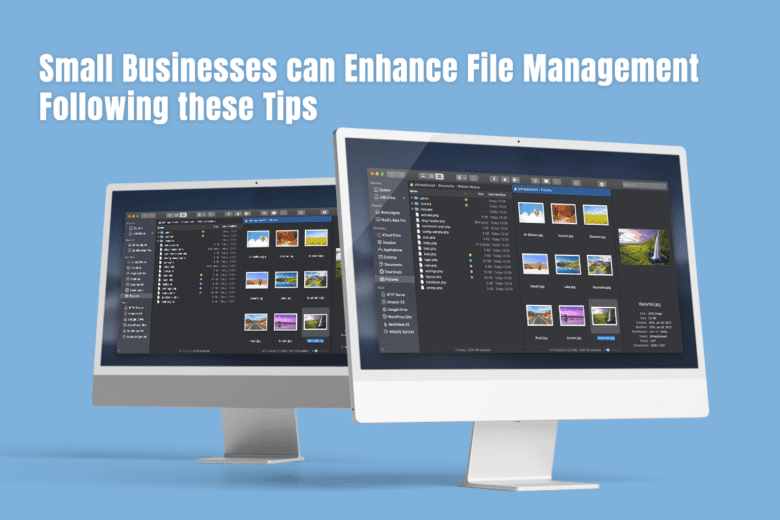The last few decades have transformed the analog world into a digital one, where everything revolves around data. The world’s biggest companies and organizations rely on data to perform, manage, and, most importantly, assess numerous activities. However, since data is a virtual entity, it faces the risk of being wiped or deleted, which can lead to data loss, which according to Techopedia, refers to the process or activity that results in data being deleted, corrupted, or rendered unreadable. Moreover, when dealing with tons of data, such as files and folders, it is crucial that the individual, company, or business follows the right measure for managing it properly.
Data loss is one of the biggest concerns in today’s digital world. Thus, it is essential for businesses, especially the small ones, to try controlling it to ensure their business runs smoothly and efficiently. One of the most effective ways to do so is to follow efficient data-managing methods. There are tons of helpful file management tips that small businesses and companies can follow to ensure that their data stays safe, secure, and well-managed. This article will shed light on some effective methods following which small businesses can enhance their file management situation. Let us dive right into it:
- Store Similar Types of Files Together
Being a part of any business requires individuals to deal with tons of files. Moreover, when it comes to managing files and folders, it becomes a hassle-filled task if there are tons of files and folders that need to be organized. However, the mortifying task can be simplified by following file management tips. For instance, one of the most effective ways to manage files is to put similar types of files together. Furthermore, the file management system becomes better when individuals group similar formats of files.
However, this becomes an issue if the same category of files is not in the same format. Let us consider an example. If a user wishes to group and store similar types of videos together, each of which has the same format, it may become an issue if some videos belong to a different format. For instance, if you are assigned the job of grouping all MP4 files together, but there are specific MKV files, it may prevent you from carrying on the file management process. Thankfully, there are numerous methods following which users can convert files from one format to another. If you have an MKV file and are wondering how to convert to the MP4 format, you can quickly get the job done using converter applications like Permute (macOS) or Movavi (Windows). Besides this, you can also opt to use web-based video converters to get the job done easily.
- Choose the Right Location to Store the Data
Every small business that aims to expand its horizons and grow exponentially in the future must properly manage its data, such as files and folders. One of the first steps involved in the data or file management procedure is choosing the right location to store important files. For instance, businesses can opt to store their data in an external storage device to ensure that it remains secure from remote hacking or breaches. However, the risk of the storage component or server getting stolen or becoming corrupted remains. Hence, most small businesses nowadays opt to store important files and folders on reliable cloud storage platforms. Many top-tier cloud storage platforms are readily available for businesses, such as Dropbox, Google Drive, and iCloud. The best part is that most online cloud storage platforms offer business plans for those who require ample space for storing files. Besides being a safe option, using cloud storage platforms for storing files also offers numerous benefits to users. For starters, individuals of the company or business can readily access data using multiple devices. Besides this, since cloud storage platforms offer ample storage, businesses do not need to worry about running out of storage space.
- Follow a Consistent File Naming System
Once similar types of files have been stored together in folders and sub-folders, businesses should implement a consistent and logical file naming system to ensure that everyone with access to files and folders faces no issues when trying to find any file or folder whenever required. Moreover, every individual who is a part of the business should conform to the established naming conventions. There are multiple options businesses can choose from when it comes to naming systems. For instance, they can name files and folders based on the creation date of files. Besides this, they can also choose to label data based on the employee’s or client’s name. There are tons of consistent naming systems that businesses can choose from and implement when managing or organizing their files based on their requirements.
Every small business should follow the aforementioned file management tricks to ensure a smooth and seamless organizing experience.
